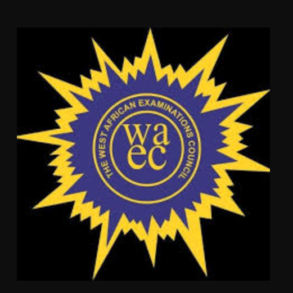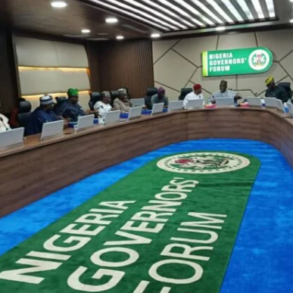Afimag.com –
The purpose of education cannot be achieved without a proper development of a academic curriculum. Under the capacity of curriculum, Nigeria’s education system has recorded a series of progress when compared with the value of education in 1842.
Judging from the nation’s academic system, basic education is tremendously affected by these curriculum changes. According to the immediate past commissioner for primary education, Delta State, Hon. Chika Ossai, the Nigerian education sector is challenged by varieties elements which include insufficient teaching materials, lack of personnel, national policy, and poor organization of curriculum contents.
It has not been easy to blend the curriculum contents to bridge the gap at the present academic sector. Effort to bring lasting solution to the problem has become essential to transforming Nigeria’s curriculum at every educational level.
A BRIEF HISTORY OF CURRICULUM DEVELOPMENT IN NIGERIA WITH A REFERENCE TO THE MISSIONARIES
Curriculum development has its way in Nigeria following the advent of the Missionaries who came into the country in 1842. These Missionaries established schools to positively impact on Nigerians.
The Christian missionaries were so influential to the point that they managed the Nigerian school curriculum from 1842 to 1882. They maintained a sole ownership and management of the schools after establishment.
The Missionaries (Foreigners) also established teaching methods, the objectives, and the curricula to be adopted by the schools. In addition, the teaching methods focused on how the subjects in the missionary curriculum were taught in classrooms.
Nigerians were taught the Four R’s. The Four R’s were Arithmetic, Reading, Religion, and Writing.
The first group of primary schools was established in the Western region – Lagos, Abeokuta, and Badagry. While the subsequent primary schools were in Ibadan, Ogbomosho, and Ijaiye.
The Christian missionaries later established primary schools in many other Nigerian areas with the inclusion of Calabar with the support of the community members.
Though, the purpose of establishing the schools was to propagate and promote missionaries activities as well as to give impart instructions to the new converts through the use of English Language, and educating books, lay-readers, and teacher-catechists.
However, the 4 R’s contained the primary instructions given by the missionaries. The Nigerian converts were made to join the British, observe their culture and co-exist among the pastor-teachers.
Put differently, the Christian missionaries had the intention to restrict their roles to the provision of primary education. They were defeated by calls of Nigerian followers in several Christian communities to establish secondary or Grammar schools in various local governments.
As a result, Church Missionary Society (CMS) was established in Lagos in 1859. This was soon followed by the creation of several other missionary grammar schools including the Baptist Academy, the Methodist Boys’ High School as well as the Methodist Girls’ High School.
Each of these schools adopted the missionary curriculum and was managed by Christian missionaries. Also, the schools offered a broad range of subjects including Moral Philosophy, Euclid’s Elements, Mythology and Antiquities, Political Economy, English Grammar and Composition, French, Plain Treatises on Natural Philosophy, Botany, Geology, Physiology, Bookkeeping, Chemistry, Geography, History, Hebrew, Latin and Greek Grammar.
THE EARLY CURRICULUM (1882 TO 1925)
This era of curriculum development began in 1882 and it marked a significant milestone in Nigeria’s educational history. From the year 1882, the Nigerian government started gearing efforts towards the development of the school curriculum. In that same year, the government implemented an Education Act with a Board of Education.
Meanwhile, this Board of Education was vested with the power to regulate all-level educational development in West Africa’s English-speaking countries. Implemented in 1887, Nigeria’s first Education Act came alongside an independent Board of Education that was created for Nigeria.
The Act empowered the Nigerian Board of Education to regulate and coordinate educational development in Nigeria. Also, it made provisions for `Assisted and Non-Assisted’ schools. As implied in the Act, every `Assisted School’ was authorized to receive government grants generated on the basis of `payment by results’.
Also, the grants were dependent on appropriate inspection reports. This stimulated most of the schools in Nigeria at the time to recruit more qualified teachers to take students the majority of the subjects in their curricula.
This move was aimed at attaining a higher proportion of passes in the subjects in order to receive more grants from the government. Schools concentrated more on the teaching of Arithmetic and English as they constituted the required subjects for recruitment in the civil departments.
CURRICULUM DEVELOPMENT DURING AND AFTER THE PHELPS-STOKES COMMISSION (1925 TO 1952)
The Phelps-Stokes Commission was noted for the initial failure to help in matching education to the needs of Nigerians. The major reason for this was the excess attention given to the academic curriculum. Generally, Nigerians at the time favoured the academic curriculum above the agricultural or technical curriculum owing to the fact that some of the previous sets of students had used it in gaining admission to higher institutions of learning including the Universities. Besides, it had proved effective as a guaranty towards securing high-paying white-collar jobs. And so, the Phelps-Stokes Commission eventually made a move intended to match education in Nigeria to the actual needs of Nigerians. Going by this move, it was agreed that considerable attention should not be on European countries but on African countries in teaching subjects like Biology, Geography, and History.
Subsequently, the colonial government made efforts towards the provision of agricultural and technical education and these apparently resulted from the veritable acceptance of the recommendations put forward by the Phelps-Stokes Commission. In actuality, Nigerian indigenes constantly demanded Western-style academic education.
Having made a similar observation, the Advisory Committee on Native Education in British Tropical Africa suggested that the teaching method, as well as the content for the respective subject in the school curriculum, should match the African environment and lifestyle.
In addition, the Education Ordinance passed in 1926 laid emphasis on Nigeria’s curriculum development at various schools. Some of the provisions of the Ordinance were the registration of teachers and constant assessment of the subjects offered in schools to quicken the development of school curricula. The Ordinance also maintained the `payment by results’ principle that had been in existence before the Ordinance was formulated.
WAEC TO INDEPENDENCE (1952 TO 1960)
WAEC (fully known as West African Examination Council) came into inception in 1952 after Dr. G.B Jeffrey, the Director of the Institute of Education University of London, suggested its establishment. In 1953, the Council [WAEC] launched its Lagos branch in Yaba.
At the point of establishment, WAEC was intended to foster curriculum development through the inspection of schools –a process that would eventually lead to the approval of schools as well as the acceptance of their students for the West African School Certificate Examination formerly known as Cambridge Overseas School Certificate Examination.
As a result of this, Nigerian grammar schools would be interested in teaching the subjects usually considered in the examinations set by WAEC. Meanwhile, the coming of WAEC has played an authoritative role in Nigeria’s curriculum development.
In addition to the contributions of WAEC, the development of curricula at Nigerian schools was stimulated by several other factors including the moves made by several ministries of education at the regional level. The defunct Eastern Region, in 1959, conducted a revision of its curriculum for primary schools. This move was effected on the First School Leaving Certificate Examination as well as Secondary School Syllabuses in subjects like Geography, History, and English.
Other major moves were centered on revising the curriculum for training teaching staff. Significantly, all of these moves were carried out in preparation for the impending independence of 1960. At the time, it had already been declared that Nigerian would gain political independence by 1960.
Meanwhile, the defunct Eastern Region observed that it was necessary to discard some portion of the British-style academic curriculum and replace it with something that would adapt to the needs of the eastern populace. Also in other regions of Nigeria, attempts were put forward to ensure significant changes were introduced in the country’s education system.
CURRICULUM DEVELOPMENT SINCE INDEPENDENCE
Shortly after the Ashby Report was submitted, Nigeria attained independence from British rule on October 1, 1960. The Ashby Commission drew specific attention to Nigeria’s curriculum development particularly by suggesting the establishment of compulsory manual projects in Nigerian secondary schools.
More so, it recommended that various types of curricula should be provided at secondary schools. Meanwhile, it was suggested that the curricula should include agricultural, vocational and commercial courses.
Members of the Ashby Commission further suggested the establishment of Advanced Teachers’ Colleges (to be affiliated with Universities) and the integration of the pre-service and the in-service training given to teachers. Other recommendations implied that there should be a new undergraduate course described as B. Ed (alternatively B. Sc. Ed and B. A. Ed) in the Universities. There are several citations to clarify that the recommendations of the Ashby Commission have been completely carried out. Some of these citations are:
1. The commencement of B.Ed. courses in the Faculties of Education of various Nigerian universities including the ones in Nsukka, Lagos, ABU, Lagos, Ilorin, Ife, and Ibadan.
2. The establishment of Advanced Teachers’ Colleges in various Nigerian areas among which are Ilorin, Ondo, Ore, Ikere-Ekiti, Ilesha, and Ondo.
Since the independence of 1960, some of the other notable bodies which have played key roles in Nigeria’s curriculum development are:
1. The National Curriculum Conference
2. The Nigerian Educational Research Council –NERC
3. The National Policy on Education
CURRICULUM DEVELOPMENT UNDER THE BRITISHCOLONIAL GOVERNMENT
The curriculum of the missionaries and the British colonial government focused on producing clerks, messengers, interpreters and skilled workers. The curriculum was designed after the British education system.
The curriculum features such subjects as Latin, Greek and Religion in the grammar school curriculum before Science later featured in the schools. It is ‘bookish’ in orientation.
Also, in 1890, Henry Carr (Chief Clerk in the colonial office and Her Majesty’s sub-inspector of schools of the colony of Lagos) recommended that teachers should be trained in content area, methodology and school management.
CONTRIBUTORS TO CURRICULUM DEVELOPMENT INNIGERIA
1. Henry Carr proposed the setting up of Government Model Schools and the use of mother tongue as language of instruction.
2. Lord Fredrick Lugard, C.M.S under Bishop Tugwell (1898), Dr. W.R.SMiller Han Visher initiated the Western (non-secular) Education in northern Nigeria.
3. The Baptist Mission set up the Phelps-Stokes Commission to report on education and the needs of African society. The commission’s report made useful influence in curriculum development in Nigeria.
4. The Ashby Commission helped to establish universities and polytechnics in Nigeria.
REFERENCES
Aisiku J. U. (1987) National Policy on Education I “Perspectives in Curriculum and Instruction:” New Yor, Civiletis International
Ehindero O. J (1994): The School and Curriculum Evolution in Nigeria. Ibadan, textflow ltd
Fafunwa Babs (1974): History of Education in Nigeria
Omolewa M. A. and Sarunmin A. (2002): Government and Curriculum Development in Designing Content of the Curriculum. A guide to practice. Ibadan, Maybest Publication, pp216-238
Okafor C. N (1996) Curriculum Development Strategies in Curriculum Development and Educational Technology. Makurdi.









Good